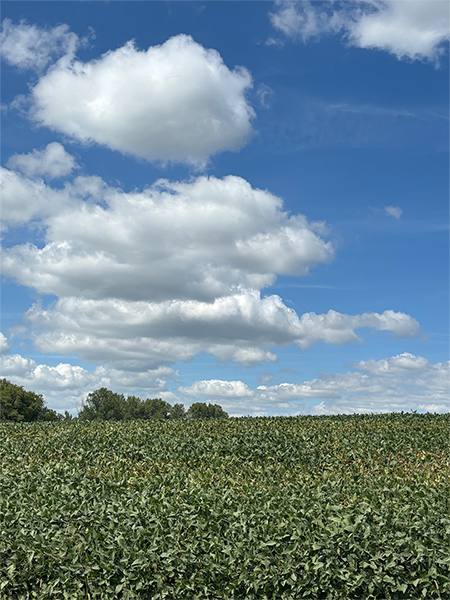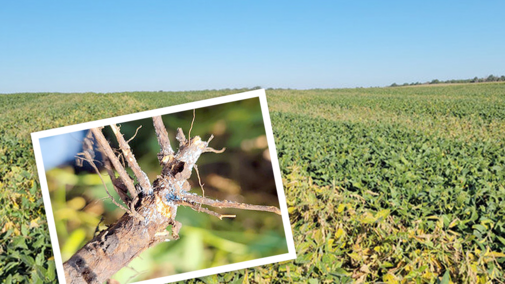Key Takeaways
SDS is appearing now in Nebraska soybean fields, with symptoms visible at R3 and later growth stages.
Cool, wet spring conditions set the stage for early infection; heavy rains around flowering intensified symptoms.
Scouting is critical to distinguish SDS from brown stem rot and other diseases.
Blue fungal growth on roots and petiole retention are strong SDS indicators.
Management focuses on resistance and timing: Use tolerant varieties, adjust planting dates in high-risk fields, and consider seed treatments for 2026 planting.
Sudden death syndrome (SDS) is showing up in soybean fields across Nebraska, with symptoms becoming more visible as plants move through late reproductive stages. While there’s no way to reverse yield loss this season, scouting now will help growers confirm disease presence, evaluate its impact, and make informed seed and management decisions for 2026.
The following overview highlights how SDS develops, key symptoms to watch for, and management options to consider for future seasons.
Pathogen
Cool spring rains and prolonged wet soil conditions after planting this spring promoted soybean infection from the soilborne pathogen (Fusarium virguliforme) that causes SDS. This fungal pathogen infects soybeans early and grows without observable symptoms often until late July or early August, when the interaction between stresses and plant development reveal symptoms that range from patches of foliar chlorosis to entire declining fields.
Disease Symptoms
Foliar symptoms of SDS typically do not appear prior to soybean flowering. Early symptoms at the R3 and later growth stages consist of the presence of chlorotic (yellow) spots on the leaves between veins. As the symptoms advance, the yellow spots may coalesce but stay between the veins at the leaf margin. Eventually, the yellow areas between the veins will become brown (necrotic) as the tissue dies.
Roots will exhibit a root rot on the tap root. The discoloration of the vascular tissue is contained to the outer stem area (xylem vessels) and can extend up the stem from the soil line. The pith will remain white, which is a key symptom to differentiate SDS from brown stem rot.
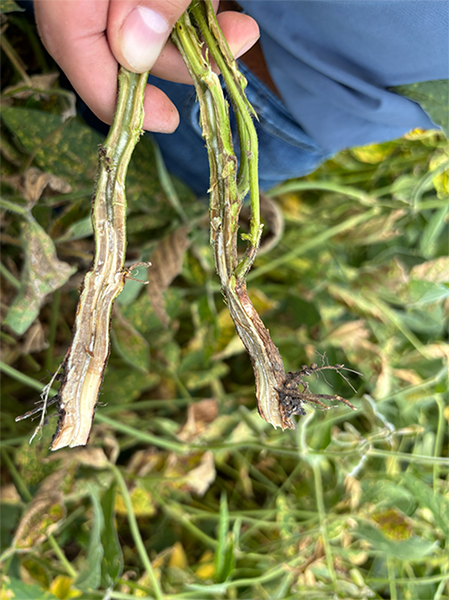
Pods may be aborted and plants may defoliate early. Defoliated plants will retain their petioles. Retention of the petioles is a symptom frequently associated with SDS.
Symptoms on the root system are difficult to distinguish from other soybean root rots. When roots are removed from soil, the fungus is sometimes visible on the outer root surface. In some, but not all cases, this fungal growth will be blue.
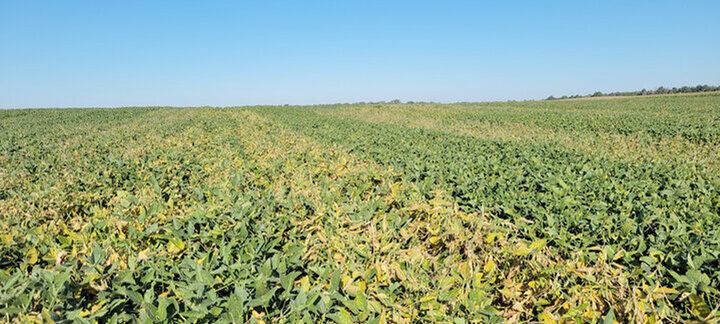
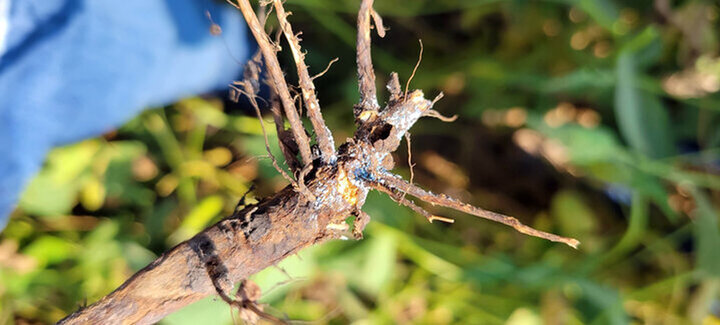
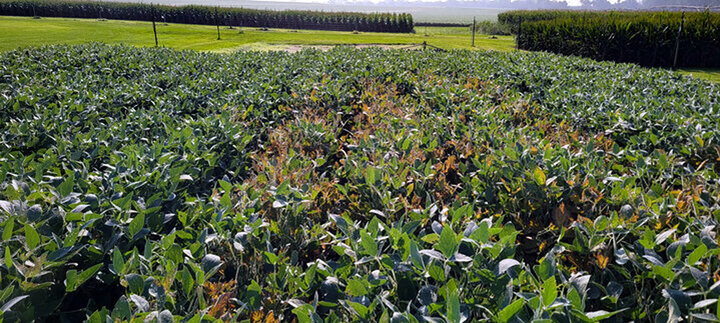
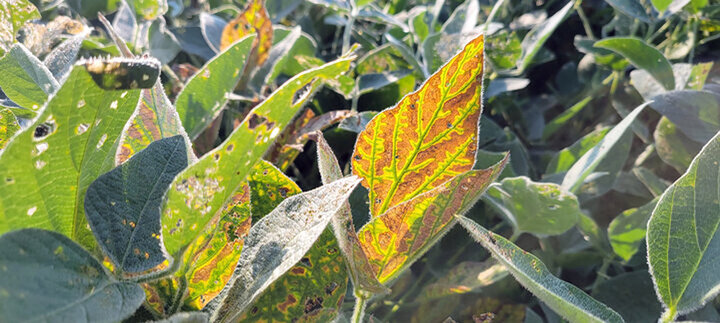
Favorable Environmental Conditions
SDS is favored in high-yield environments. The disease is more prevalent during cool, wet growing seasons and favored by early planting in cool soils. Hot, dry weather appears to slow disease development, but depending on the stage, it can become severe under these conditions. Heavy rains around the flowering time promote foliar symptom development.
Management
Genetic Resistance
Soybean varieties with moderate to high levels of resistance to SDS are available. Varieties with partial resistance or tolerance to SDS should be considered in fields known to be affected by this disease. These varieties will not prevent disease completely, but they can protect yield.
Cultural Practices
Avoid early planting in fields know to be severely affected by SDS. Rotation out of soybean production and maintaining good crop nutrition have been shown to reduce the severity of SDS.
Chemical/Biological Control
There are chemical seed treatments that provide protection against SDS. Find up-to-date efficacy information on product performance at the crop protection network or in the “Guide for Weed, Disease, and Insect Management in Nebraska” (Nebraska Extension NebGuide EC130).
Additional Information
- Crop Protection Network Efficacy Guides: https://cropprotectionnetwork.org/publications/fungicide-efficacy-for-control-of-soybean-seedling-diseases
- Nebraska Extension NebGuide EC130: https://marketplace.unl.edu/extension/ec130.html
